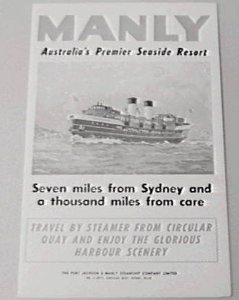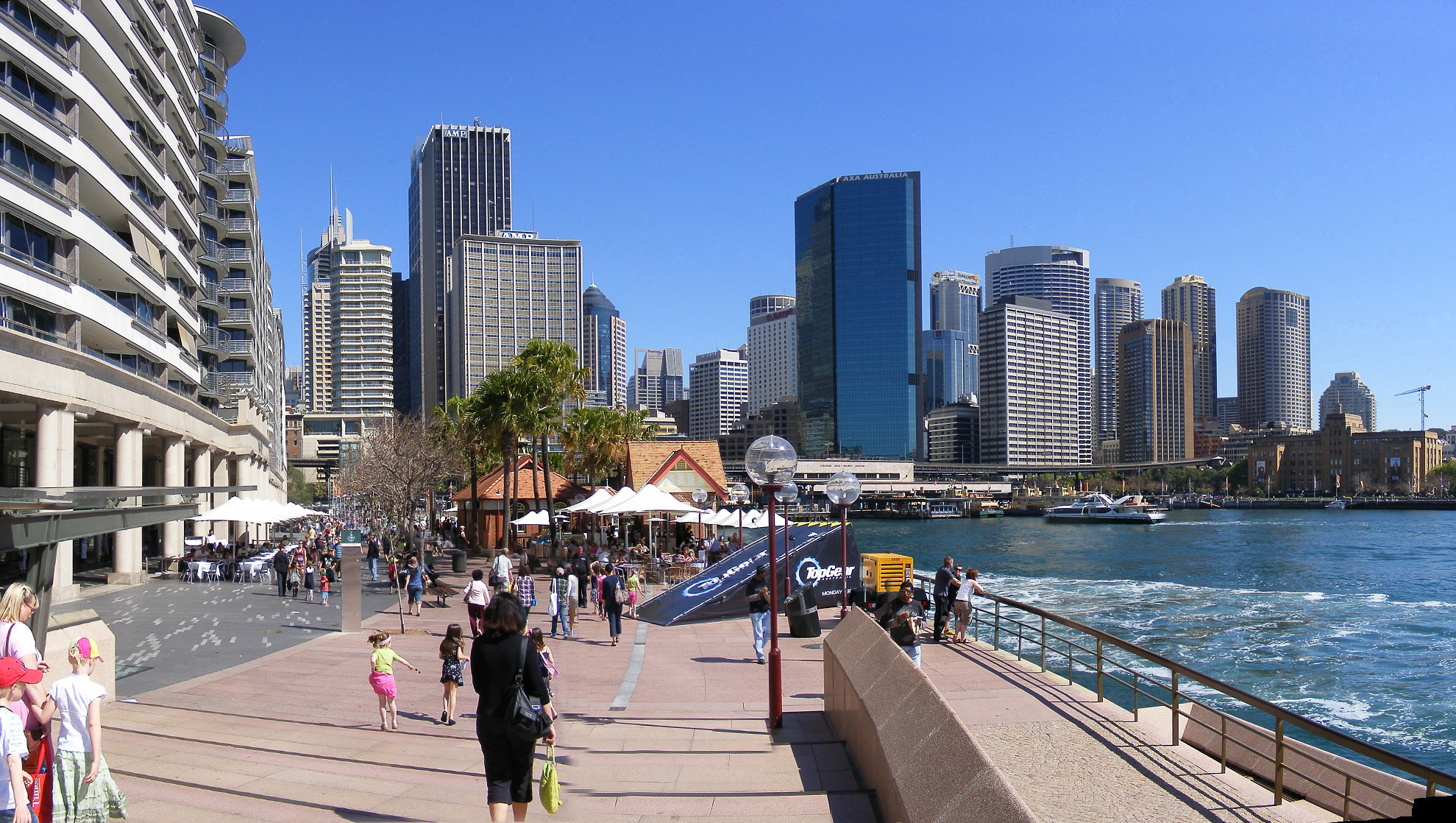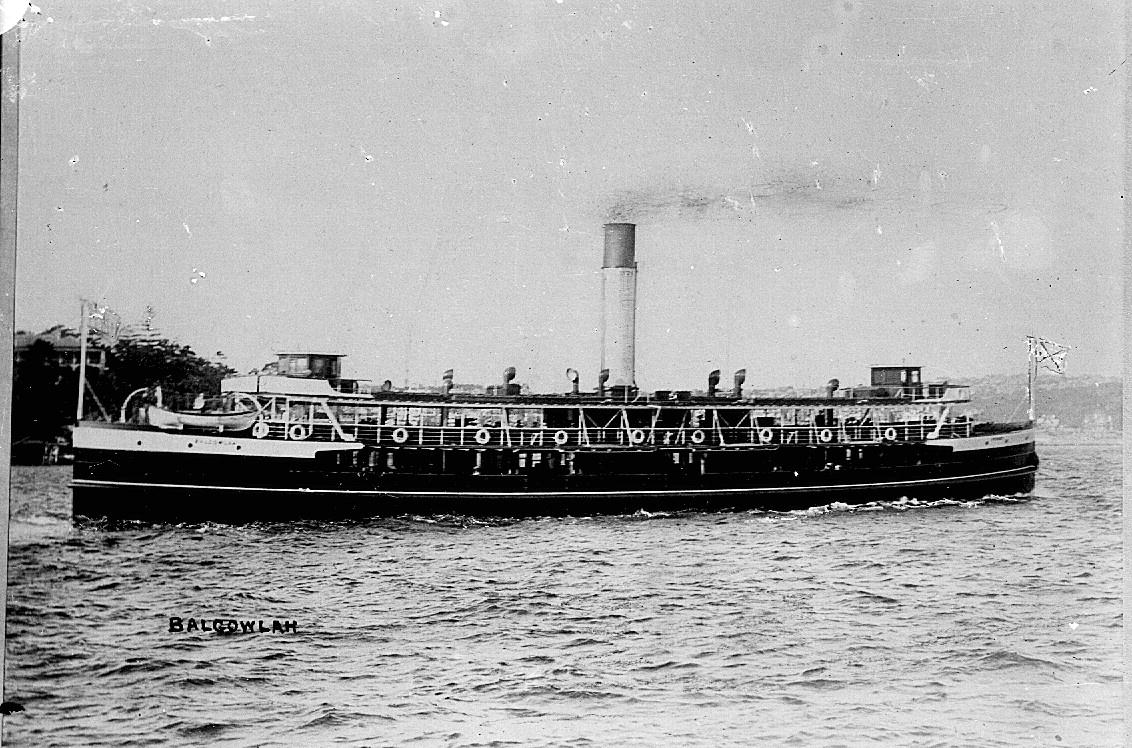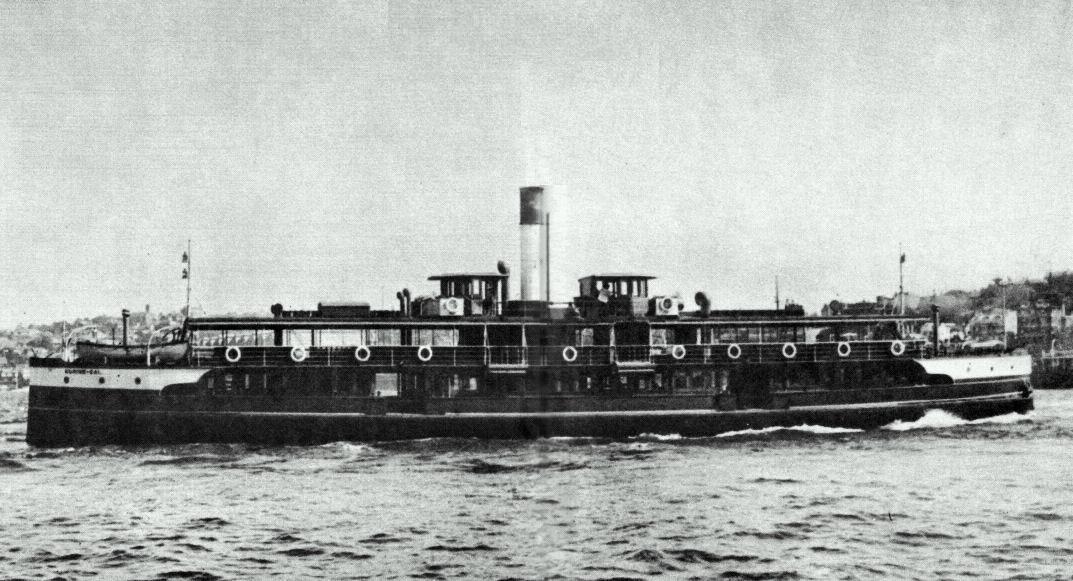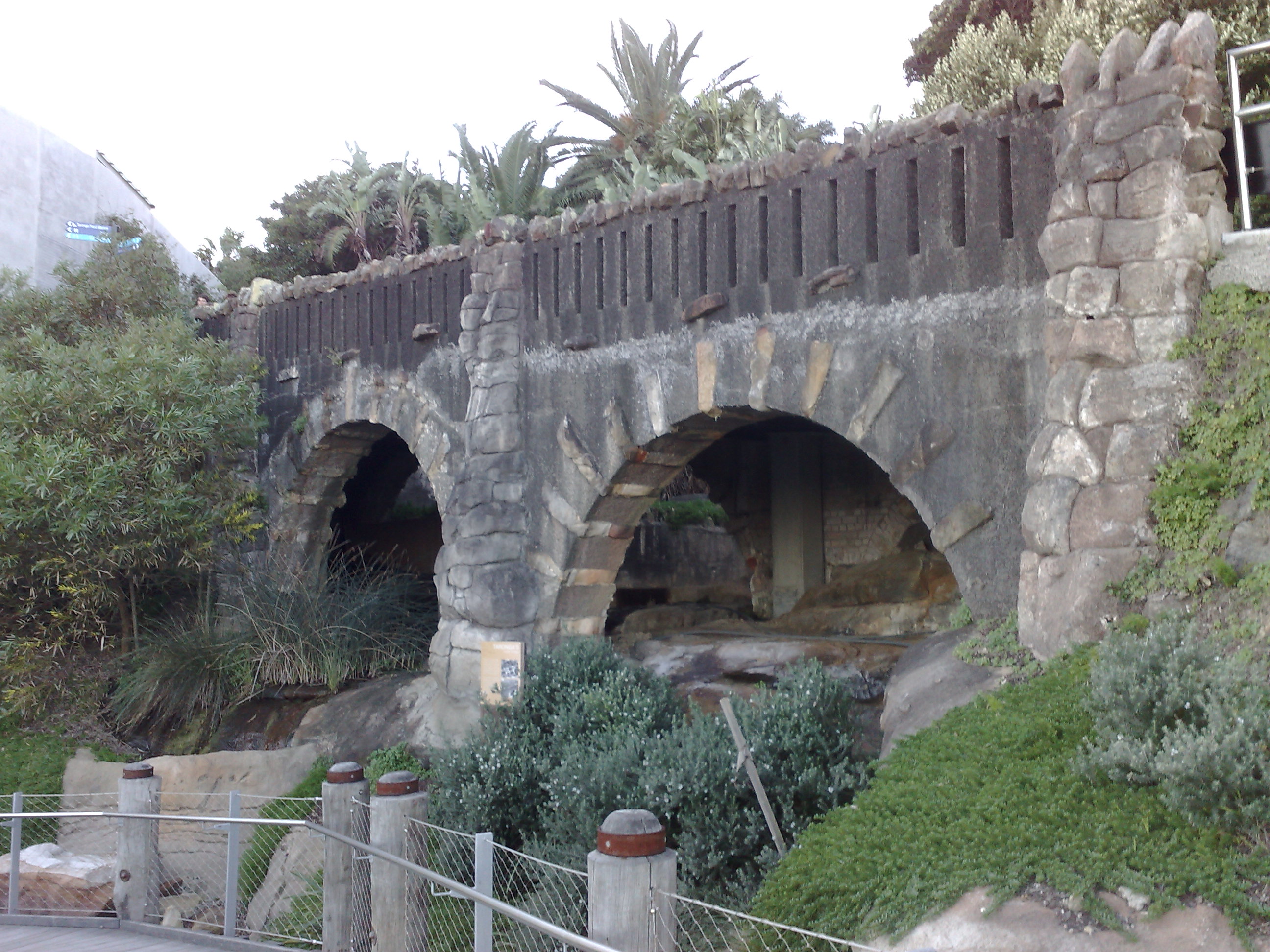|
Kareela (ferry)
''Kareela'' was a " K-class" ferry on Sydney Harbour. Launched in 1905, the double-ended timber-hulled steamer was built for Sydney Ferries Limited in response to the early twentieth century boom in cross-harbour ferry travel prior to the opening of the Sydney Harbour Bridge. She was the first of Sydney Ferries Limited's boats to have a fully enclosed upper deck. She survived the 1932 opening of the Sydney Harbour Bridge when many ferries were removed from service, and also the early 1950s rationalisation of the fleet following NSW Government takeover. Nicknamed "The Box", she had a relatively incident free career apart from a collision with a wharf that killed three of her passengers. She was sold in 1959 and broken up. "Kareela" is thought to be an Australian Aboriginal word meaning "south wind". Background ''Kareela'' was built for Sydney Ferries Limited during the early twentieth century boom in cross-Harbour travel prior to the 1932 opening of the Sydney Harbour Bridge. At t ... [...More Info...] [...Related Items...] OR: [Wikipedia] [Google] [Baidu] |
Sydney Ferries Limited
Sydney Ferries Limited operated ferry services on Sydney Harbour from 1900 until June 1951. The company grew out of the North Shore Steam Ferry Company and took over smaller ferry operators to become the largest ferry operator in Sydney's history. Without a physical connection across the harbour, demand for ferry services to developing areas on the North Shore rose dramatically and Sydney Ferries commissioned 27 large ferries in its own right between 1900 and 1922. The company named its vessels with Australian Aboriginal words beginning with "K". The 1932 opening of the Sydney Harbour Bridge saw the companies annual patronage drop from 40 million to 15 million. Nineteenth century beginnings The first regular passenger ferry services across the harbour began in the 1840s and 1850s, at which time the Gerrard Brother's ran paddle steamers ''Ferry Queen'', ''Brothers'', and ''Agenoria''. ''Herald'' was sent out from England for the North Shore Steam Company and later for E Evans ... [...More Info...] [...Related Items...] OR: [Wikipedia] [Google] [Baidu] |
Port Jackson And Manly Steamship Company
The Port Jackson and Manly Steamship Company (PJ&MSC) was a publicly listed company that operated the Manly ferries in Sydney, Australia. After being taken over by Brambles Industries, the ferry service was eventually taken over by the State Government and is now part of Sydney Ferries. The company is notable for coining the expression about Manly being "Seven miles from Sydney and a thousand miles from care" and for promoting development in the Manly and Pittwater / Broken Bay areas. Formation The history of the PJ&MSC is entwined with the history of Manly itself. Manly had been envisaged as a seaside resort by Henry Gilbert Smith in the 1850s. Initially Smith had chartered a paddle steamer to Manly and other vessels visited on an ad hoc "excursion" basis. Smith built a wharf in 1855 and eventually acquired an interest in steamers himself and soon more regular services to Manly had commenced. By 1873 Smith had sold the lease to the wharf and his share of the steamers to ... [...More Info...] [...Related Items...] OR: [Wikipedia] [Google] [Baidu] |
The Labor Daily
The ''Labor Daily'' was a Sydney-based journal/newspaper of the early to mid 20th century. An organ of the Australian Labor Party, it was published in Sydney by Stanley Roy Wasson after the ailing ''Daily Mail'' was absorbed by Labor Papers Ltd, who began publication under that name on 6 January 1922 with the strong support of Albert Willis and the Miners' Federation. Willis was managing director 1926–1931 and chairman 1924–1930 and one of the most powerful political figures in the state. After a few weeks the paper's name was changed to the ''Labor Daily'' and was a supporter of Lang Labor. In 1929 receivers sold '' Beckett's Budget'' to Labor Daily Ltd. The paper also became the major sponsor of the New South Wales Rugby Football League premiership from 1934, with the winners of the competition from 1934 to 1950 being awarded the Labour Daily Cup. From 1 December 1938 the ''Labor Daily'' became the ''Daily News'' which lasted until 1941 when it was taken over by ''The Daily ... [...More Info...] [...Related Items...] OR: [Wikipedia] [Google] [Baidu] |
Sydney Cove
Sydney Cove (Eora: ) is a bay on the southern shore of Sydney Harbour, one of several harbours in Port Jackson, on the coast of Sydney, New South Wales. Sydney Cove is a focal point for community celebrations, due to its central Sydney location between the Sydney Opera House and the Sydney Harbour Bridge. It is also one of the main congregation points for Sydney New Year's Eve. History The Eora name for Sydney Cove was recorded by several early settlers of the First Fleet variously spelt as Warrane, War-ran, Warrang and Wee-rong. The spot is of great significance, as the first meeting place between Eora people and Europeans. Before colonisation of the area, Eora men speared fish from the shoreline, and women line-fished from their ' (canoes). Sydney Cove was named after the British Home Secretary, the 1st Baron Sydney (who was later created 1st Viscount Sydney in 1789). It was the site chosen by Captain Arthur Phillip, RN between 21 and 23 January 1788 for the British p ... [...More Info...] [...Related Items...] OR: [Wikipedia] [Google] [Baidu] |
Cootamundra Herald
''The Cootamundra Herald'' also published as ''The Cootamundra Daily Herald'' is a bi-weekly English language newspaper published in Cootamundra, New South Wales, Australia. Newspaper history The ''Cootamundra Herald'', subtitled ''Murrumburrah, Bethungra and Bland Advertiser'', was founded by Thomas Campbell Brown (c. 1855 – 7 April 1936) and Frederick Pinkstone (1847 – 2 January 1922) and first published on 30 January 1877. Brown, a friend of Pinkstone for even longer than they were business partners, left for Sydney in 1883, and Pinkstone continued as editor until 1916, when he was forced to retire due to illness. He called on his son William Henry to take over the editorship which he did until the age of 75 and held the ownership until his death at 78. William Henry's son Harry Pinkstone then inherited the paper and edited it for five years before his own death at the age of 48. Harry Pinkstone's widow eventually sold the newspaper to the Bradley family in 1963. On 2 ... [...More Info...] [...Related Items...] OR: [Wikipedia] [Google] [Baidu] |
SS Balgowlah
SS ''Balgowlah'' was a ferry on Sydney Harbour operated by the Port Jackson & Manly Steamship Company on the Manly service from 1912 until 1951. Background The Port Jackson & Manly Steamship Company's fleet transitioned comparatively late to screw propelled vessels and the fleet comprised mostly paddle steamers until the early years of the twentieth century. The difficulty of turning in the narrow bays of Sydney Harbour - particularly in the busy Circular Quay terminus in Sydney Cove - required the use of double-ended vessels. However, a double-ended screw configuration was particularly difficult for the fine bows that Manly ferries required for both speed and heavy seas. Further, a propeller at the leading forward end of a vessel reduced speed considerably. In the prosperous early twentieth century, this speed drawback was overcome by increasing engine size and power. The first screw ferries on the Manly run were two innovative Walter Reeks–designed vessels; the ''SS Manly' ... [...More Info...] [...Related Items...] OR: [Wikipedia] [Google] [Baidu] |
MV North Head
The MV ''North Head'' (formerly SS ''Barrenjoey'') was a ferry operated by the Port Jackson & Manly Steamship Company and its successors on the Manly service from 1913 until 1985. The vessel was launched as ''Barrenjoey'', a steamer and one of the six ''Binngarra''-type Manly ferries which were built between 1905 and 1922. In 1951, she was converted to diesel-electric power, completely rebuilt and renamed ''North Head''. She was removed from service in 1985 following the introduction of the ''Freshwater''-class ferries. She spent time in Hobart as a floating restaurant and, in 2000, she was taken to Cairns where she remains grounded and in deteriorating condition. The name "Barrenjoey" was taken from the headland at the northern tip of Pittwater. "North Head" is the northern headland at the entrance to Sydney Harbour. Background The Port Jackson & Manly Steamship Company's fleet transitioned comparatively late to screw propelled vessels and the fleet comprised mostly pad ... [...More Info...] [...Related Items...] OR: [Wikipedia] [Google] [Baidu] |
Bradleys Head
Bradleys Head is a headland protruding from the north shore of Sydney Harbour, within the metropolitan area of Sydney, New South Wales, Australia. It is named after the First Fleet naval officer William Bradley. The original Aboriginal inhabitants, who belonged to the Borogegal clan of the Eora nation, knew Bradleys Head as Borogegy, Booraghee, Booragy or Burrogy. On the headland is an active lighthouse, Bradleys Head Light, constructed in 1905. Bradleys Head is now a unit of the Sydney Harbour National Park and managed by the National Parks and Wildlife Service. History The foremast of the cruiser HMAS ''Sydney'', renowned for taking part in the Royal Australian Navy's first ship-against-ship engagement in World War I, is mounted on the headland as a memorial to that battle. In June 2000 the mast was rededicated as a monument to all Australian ships and sailors lost in conflict. Sitting on the rock platform off the headland is a Doric stone column. It is one of six ... [...More Info...] [...Related Items...] OR: [Wikipedia] [Google] [Baidu] |
The Daily Telegraph (Sydney)
''The Daily Telegraph'', also nicknamed ''The Tele'', is an Australian tabloid newspaper published by Nationwide News Pty Limited, a subsidiary of News Corp Australia, itself a subsidiary of News Corp. It is published Monday through Saturday and is available throughout Sydney, across most of regional and remote New South Wales, the Australian Capital Territory and South East Queensland. A 2013 poll conducted by Essential Research found that the ''Telegraph'' was Australia's least-trusted major newspaper, with 49% of respondents citing "a lot of" or "some" trust in the paper. Amongst those ranked by Nielsen, the ''Telegraph'' website is the sixth most popular Australian news website with a unique monthly audience of 2,841,381 readers. History ''The Daily Telegraph'' was founded in 1879, by John Mooyart Lynch, a former printer, editor and journalist who had once worked on the ''Melbourne Daily Telegraph''. Lynch had failed in an attempt to become a politician and was lookin ... [...More Info...] [...Related Items...] OR: [Wikipedia] [Google] [Baidu] |
The Sydney Morning Herald
''The Sydney Morning Herald'' (''SMH'') is a daily compact newspaper published in Sydney, New South Wales, Australia, and owned by Nine. Founded in 1831 as the ''Sydney Herald'', the ''Herald'' is the oldest continuously published newspaper in Australia and "the most widely-read masthead in the country." The newspaper is published in compact print form from Monday to Saturday as ''The Sydney Morning Herald'' and on Sunday as its sister newspaper, '' The Sun-Herald'' and digitally as an online site and app, seven days a week. It is considered a newspaper of record for Australia. The print edition of ''The Sydney Morning Herald'' is available for purchase from many retail outlets throughout the Sydney metropolitan area, most parts of regional New South Wales, the Australian Capital Territory and South East Queensland. Overview ''The Sydney Morning Herald'' publishes a variety of supplements, including the magazines ''Good Weekend'' (included in the Saturday edition of ''Th ... [...More Info...] [...Related Items...] OR: [Wikipedia] [Google] [Baidu] |
Tweed Daily
''The Tweed Daily'' was a daily English language newspaper published in Murwillumbah, New South Wales, Australia from 1914 to 1949. It was also published as the ''Tweed and Brunswick Advocate and Southern Queensland Record'', ''Tweed and Brunswick Advocate'', ''Tweed Times and Brunswick Advocate'', ''Tweed Herald and Brunswick Chronicle'', ''Tweed and South Coast Daily'', ''The Daily News'', ''Tweed and Gold Coast Daily News'', and the ''Tweed Daily News''. History The first edition of the ''Tweed and Brunswick Advocate and Southern Queensland Record'' was published by William Robert Baker on 31 October 1888. On 13 May 1903, it was renamed the ''Tweed and Brunswick Advocate'', published by John William Kilner. On 26 July 1905, publisher P.W. Tarlinton renamed it the ''Tweed Times and Brunswick Advocate'', also known as the ''Tweed Times''. In July 1893 George Niklin started publishing the ''Tweed Herald and Brunswick Chronicle'', also known as the ''Tweed Herald''. On 1 January ... [...More Info...] [...Related Items...] OR: [Wikipedia] [Google] [Baidu] |
Taronga Zoo
Taronga Zoo is a zoo located in Sydney, New South Wales, Australia, in the suburb of Mosman, on the shores of Sydney Harbour. The opening hours are between 9:30 a.m. to 5 p.m. Taronga is an Aboriginal word meaning 'beautiful water view'. It was officially opened on 7 October 1916. Taronga Zoo Sydney is managed by the Zoological Parks Board of New South Wales, under the trading name Taronga Conservation Society, along with its sister zoo, the Taronga Western Plains Zoo in Dubbo. Divided into various zoogeographic regions, the Taronga Zoo Sydney is home to more than 2,600 animals of approximately 250 different species. It has a zoo shop, a cafe, and an information centre. History The Royal Zoological Society of New South Wales opened the first public zoo in New South Wales in 1884 at Billy Goat Swamp in Moore Park, on a site now occupied by Sydney Boys High School and Sydney Girls High School. Inspired by a 1908 visit to the Hamburg Zoo, the secretary of the zoo, Albert ... [...More Info...] [...Related Items...] OR: [Wikipedia] [Google] [Baidu] |

